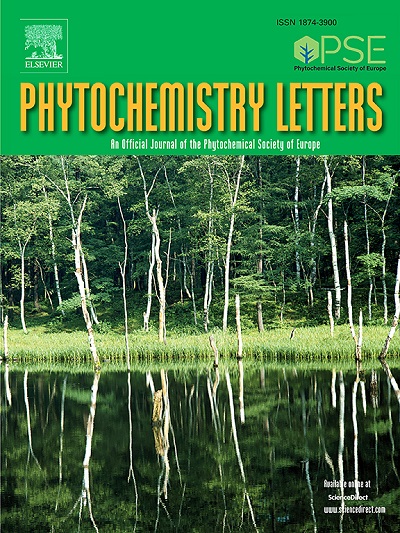Bioassay-guided isolation of acetylcholinesterase and butyrylcholinesterase inhibitors from Horsfieldia tomentosa fruits (Myristicaceae)
IF 1.3
4区 生物学
Q4 CHEMISTRY, MEDICINAL
引用次数: 0
Abstract
Alzheimer's disease (AD) is the most common form of dementia associated with the accumulation of abnormal protein deposits in the brain, including beta-amyloid plaques and tau tangles, as well as oxidative stress. The limited effectiveness of current medications in temporarily treating symptoms has driven interest in natural products for their diverse biological activities. This study investigates the bioactive potential of various extracts obtained from the fruits of Horsfieldia tomentosa, focusing on their antioxidant and anticholinesterase properties. Total phenolic and flavonoid contents were quantified, antioxidant and anticholinesterase activities were evaluated. The ethyl acetate extract exhibited the highest bioactivity, with total flavonoid content (361.11 ± 26.24 mg QE/g), total phenolic content (1601.46 ± 1.23 mg GAE/g), antioxidant activity (1.81 ± 0.06 µg/L), and significant anticholinesterase activities (AChE = 6.0 ± 0.30 µg/mL; BuChE = 32.1 µg/mL). Three previously undescribed phenolic compounds along with four known compounds were purified from this extract. The assayed isolated compounds exhibit selective cholinesterase inhibition, with compound 2 showing the strongest activity (IC50 value of 3.9 µM against AChE), while compound 1 was more effective against butyrylcholinesterase (IC50 value of 7.8 µM). Molecular docking supported the in vitro findings, revealing binding energies of - 9.0 ± 0.5, - 8.5 ± 0.1, and - 8.3 ± 0.1 kcal mol−1 for compounds 1, 2 and 5, respectively, against butyrylcholine protease (6ESY). Compound 1 also showed significant binding energy (- 8.0 ± 0.1 kcal mol−1) against acetylcholine protease (4MOE). In these results, compound 2 acts as a dual inhibitor, while compounds 1 and 5 primarily inhibit butyrylcholinesterase. These results underscore the therapeutic potential of Horsfieldia tomentosa in treating Alzheimer’s disease.
求助全文
约1分钟内获得全文
求助全文
来源期刊

Phytochemistry Letters
生物-生化与分子生物学
CiteScore
3.00
自引率
11.80%
发文量
190
审稿时长
34 days
期刊介绍:
Phytochemistry Letters invites rapid communications on all aspects of natural product research including:
• Structural elucidation of natural products
• Analytical evaluation of herbal medicines
• Clinical efficacy, safety and pharmacovigilance of herbal medicines
• Natural product biosynthesis
• Natural product synthesis and chemical modification
• Natural product metabolism
• Chemical ecology
• Biotechnology
• Bioassay-guided isolation
• Pharmacognosy
• Pharmacology of natural products
• Metabolomics
• Ethnobotany and traditional usage
• Genetics of natural products
Manuscripts that detail the isolation of just one new compound are not substantial enough to be sent out of review and are out of scope. Furthermore, where pharmacology has been performed on one new compound to increase the amount of novel data, the pharmacology must be substantial and/or related to the medicinal use of the producing organism.
 求助内容:
求助内容: 应助结果提醒方式:
应助结果提醒方式:


